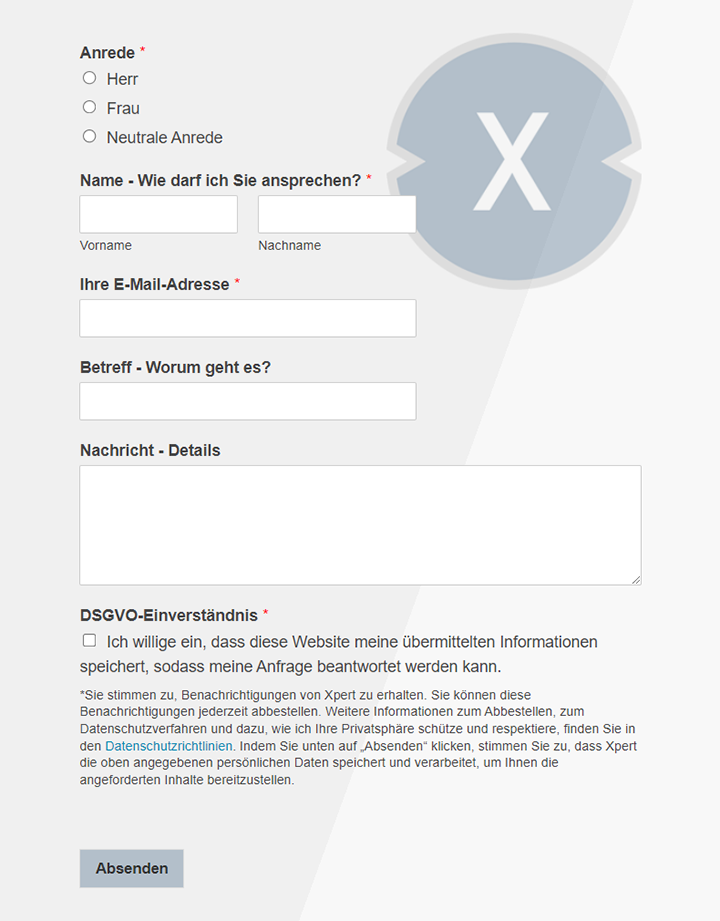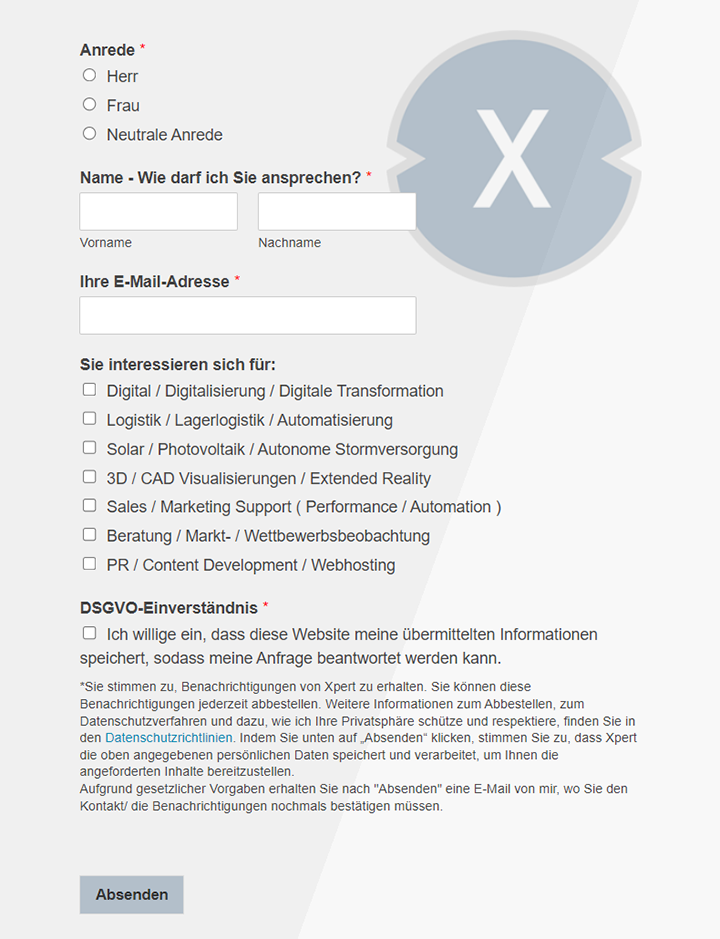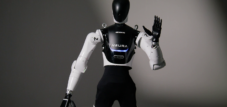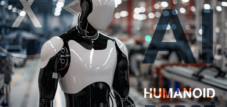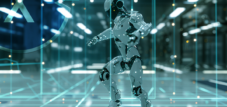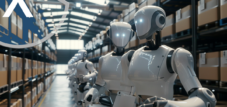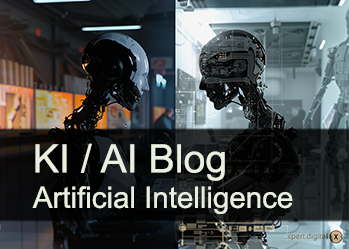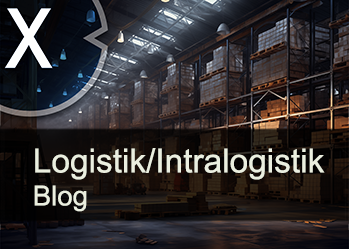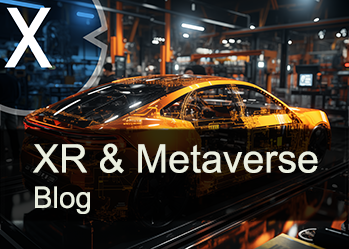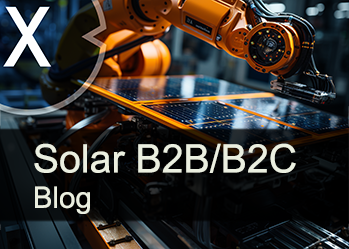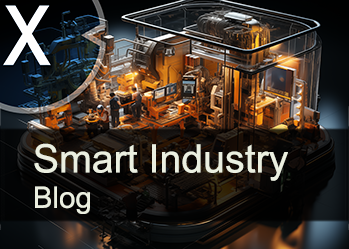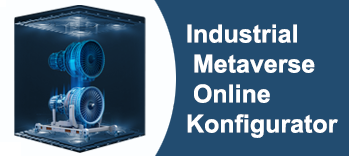Modular humanoid robot HMND 01 of the British startup Humanoid (SKL Robotics Ltd)
Xpert pre-release
Language selection 📢
Published on: February 18, 2025 / update from: February 18, 2025 - Author: Konrad Wolfenstein

Modular humanoid robot HMND 01 of the British Startup Humanoid (SKL Robotics LTD) - Image: Humanoid / SKL Robotics LTD
The HMND 01 - Intelligent robotics meets flexible automation
Humanoid robotics in industrial automation: a comprehensive analysis of the HMND 01 and its social effects
The introduction of the humanoid robot HMND 01 by the British startup Humanoid marks a significant progress in automation technology. This highly developed, modular robot is specially designed for use in industry and offers a combination of artificial intelligence, advanced movement control and flexible hardware modules. The aim is to compensate for the growing shortage of labor and at the same time support human -centered work environments.
With a height of 175 cm, a load capacity of 15 kg and a walking speed of 1.5 m/s, the HMND 01 is able to be used productively in various industries, including logistics, manufacturing and retail. The company is already planning prototype tests in 2025 and pilot projects for retail.
This article illuminates the technical innovations of the HMND 01, its operational performance as well as the potential social and economic effects of humanoid robotics. In view of a forecast market volume of $ 6.5 billion, such systems are becoming increasingly important by 2030.
Technological architecture and performance
Biomechanical design and movement ability
The HMND 01 is based on the dimensions of human anatomy, so that it can be integrated into existing work environments without major infrastructural adjustments. With 41 degrees of freedom in its joints, the robot achieves high mobility, which enables it to carry out complex manipulation tasks.
Its textile cladding not only serves aesthetic purposes, but also offers protection against dust and dirt, while the modular drive system uses a combination of electric motors for the legs and pneumatic gripping mechanisms in the hands. This allows the robot to manage both coarse motor lifting tasks and fine motor activities.
Another outstanding feature is the double battery system with a term of four hours. Thanks to the hot swap mechanism, the batteries can be changed during operation, which means that the robot can also work with minimal interruptions in layer companies.
Transportation and manipulation skills
The HMND 01 uses a special algorithm for full body control, which enables dynamic stability on uneven surfaces. With the help of inertia sensors and deep cameras, it adapts to different soil conditions in real time. Its walking speed of 1.5 m/s is comparable to that of an average person, but the robot can also maintain constant speeds under stress, which makes it particularly valuable for material transport tasks.
The modular end effector system allows the quick change between different tools. Three hand configurations are currently known:
- A five -part manipulator for precise work,
- An undersigned parallel gripper for grasping and moving boxes,
- A magnetic suction device for handling metallic objects.
Performance tests have shown that the robot pick-and-place tasks with an efficiency of up to 400 cycles per hour manages and maintains a remarkable position accuracy of ± 0.1 mm over several hours.
Modular design and adaptability
Hardware configurability
The architecture of the HMND 01 is based on a three -part module structure:
- Lower body: optionally bipedals or roll -guided variant for adapting to different locations,
- Torso: contains the central electricity distribution and computing capacity,
- Upper body: customizable with different manipulation systems.
This segmentation enables companies to optimize the robot depending on the application. In this way, cost -effective, roll -guided variants for structured environments such as warehouses can be used, while the bipedale version is intended for more demanding work areas.
Software flexibility
The software stack based on ROS-2 enables easy adaptation to different tasks. Operators can program the robot using a graphical user interface with new work processes. Tests have shown that this reduces the implementation period by up to 60 % compared to conventional industrial robots.
In a pilot project with a bakery chain, the HMND 01 could be reprogrammed from the palletization to cleaning tasks within one day. This was made possible by exchanging grasper against spray nozzles and a conversion of the AI models from object recognition to pollution detection.
Artificial intelligence and sensors
Perception systems
The HMND 01 combines several sensor technologies:
- RGB-D cameras for high-resolution object recognition,
- Lidar sensors with a range of 40 m for navigation,
- Tactile sensors with over 1000 pressure points in the hands for precise handling.
These sensor data are merged with a frequency of 60 Hz to create a realistic environmental card. Tests in warehouses have shown that the robot can follow up to 300 inventory articles at the same time while certainly navigating between human employees.
Autonomous decision making
The integrated planning algorithm dismantles complex tasks into executable steps and adapts to changed conditions. In a retail simulation, the HMND 01 Autonomous 83 % unexpected obstacles (e.g. fallen goods or blocked paths) was able to bypass. Nevertheless, the system still needs human support in about 17 % of cases, especially with unstructured problems.
Economic and social impacts
Efficiency increase in industry
First tests in the logistics industry show promising results. By using the HMND 01 in sorting centers, efficiency was increased by 24 %, in particular through continuous operation in night shifts. This offers companies the opportunity to increase their productivity without relying on additional human workers.
Modular progress: The HMND 01 brings innovation to industry
While humanoid robots like the HMND 01 offer many advantages, there are also social challenges. The introduction of such systems could lead to a shift in jobs, especially for simple manual activities. At the same time, new professional fields open up in the maintenance and programming of these robots.
Another important topic is acceptance by the employees. Studies show that workers often feel humanoid robots as competition. Transparent communication and training programs are therefore essential to ensure successful integration.
For 2025, Humanoid plans the introduction of a roller -conducted variant that is cheaper and is more suitable for structured environments. At the same time, the bipedal version is further developed to achieve even higher mobility and autonomy.
The HMND 01 is an important step in industrial automation. His modular architecture, AI-based perception and flexible adaptation options make it a promising solution for companies that want to increase their efficiency and at the same time cooperate with human workers.
Suitable for:
Our recommendation: 🌍 Limitless reach 🔗 Networked 🌐 Multilingual 💪 Strong sales: 💡 Authentic with strategy 🚀 Innovation meets 🧠 Intuition
At a time when a company's digital presence determines its success, the challenge is how to make this presence authentic, individual and far-reaching. Xpert.Digital offers an innovative solution that positions itself as an intersection between an industry hub, a blog and a brand ambassador. It combines the advantages of communication and sales channels in a single platform and enables publication in 18 different languages. The cooperation with partner portals and the possibility of publishing articles on Google News and a press distribution list with around 8,000 journalists and readers maximize the reach and visibility of the content. This represents an essential factor in external sales & marketing (SMarketing).
More about it here:
The HMND 01: A modular humanoid robot revolutionizes industrial automation - background analysis
Solve a shortage of workers: How the HMND 01 jobs transformed
In the dynamic world of robotics, a London startup called Humanoid (SKL Robotics LTD) took a remarkable step forward with the presentation of its humanoid robot. This robot is not only another innovation in the area of automation, but also represents a strategic realignment towards more flexible, more human -like robot systems that were specially developed for the challenges of modern industry. The HMND 01, with an imposing height of 175 cm and a considerable load capacity of 15 kg, embodies the latest state of the art in the humanoid robotics and aims to address the growing shortage of labor in various sectors and at the same time seamlessly into existing, human -centered work environments to be integrable.
What particularly distinguishes the HMND 01 is its modular architecture. This approach enables unprecedented adaptability and versatility. Together with advanced movement control, which enables a walking speed of 1.5 m/s, and AI-based manipulation systems, the HMND 01 positions itself as a solution that goes far beyond traditional industrial robots. Humanoid relies on interchangeable hardware modules and customizable cladding to measure the robot for a wide range of applications in logistics, manufacturing and retail. The transformative potential of this technology is already indicated by plans for alpha prototypes in 2025 and first pilot programs in retail.
Here we analyze the technical innovations, the company skills and the far-reaching socio-economic effects of HMND 01. We immerse yourself in a world in which humanoid robots are no longer science fiction, but rather a realistic and increasingly important component of global economy. It is predicted that the Humanoid robot market will reach a volume of $ 6.5 billion by 2030, which underlines the immense importance and the growth potential of this field. The HMND 01 is exemplary for the next generation of robots, which should not only be more efficient, but also more flexible and human -friendly.
Technical architecture and features: A look under the "skin" of the HMND 01
In order to fully understand the skills of the HMND 01, a detailed look at its technical architecture and its performance characteristics is essential. The design of the robot is inspired by biomechanical principles and is closely based on human anatomy. These anthropomorphic dimensions - 175 cm height and 70 kg weight - are no coincidence. They enable the HMND 01 to operate in work environments that were designed for humans without the need for costly and time -consuming infrastructural adjustments. He can pass standard doors, climb on conventional stairs and act in jobs that are optimized for human work.
A key aspect of the HMND 01 is its impressive number of 41 degrees of freedom (freedom degrees describe the movement options of a robot in different joints). This high number enables complex and diverse upper body manipulation, which very close to the skill and flexibility of a human arm and a hand. This is crucial for tasks that require fine motor skills, precision and adaptability, as they occur in many industrial processes. In addition, the end effectors of the robot - the tools or "hands" at the end of his arms - are independently configurable. This means that companies can integrate specific tools and gripping systems that are tailored to their respective applications. Whether it is precisely grasp of sensitive electronics components, the safe lifting and placing heavy boxes or the handling of tools in assembly - the HMND 01 can be adapted for a variety of tasks.
Another innovative property of the HMND 01 are the customizable textile disguises. These are not only commemorated for aesthetic reasons or to protect internal components from dust and light bumps. They also offer the possibility of visual differentiation and personalization. This disguises hides a highly developed hybrid drive system. For the leg movement, Humanoid relies on powerful electric motors that enable dynamic and efficient locomotion. In contrast, precise pneumatic gripes are used in the hands. Pneumatics, i.e. the use of compressed air, offers the advantage of quick and sensitive control of the griffin power, which is particularly important when dealing with sensitive or differently shaped objects. This combination of electric motors for movement and pneumatics for manipulation is an intelligent compromise between strength, speed and precision.
Kinematic tests in which the movement ability of the robot was analyzed have resulted in a maximum horizontal range of 85 cm from the torso absorption. This range is deliberately chosen in such a way that the robot can easily access standardized warehouse shelves and production lines. In storage environments, it can thus remove or store goods from shelves, and in production lines he can move workpieces or materials between different stations. The energy supply of the HMND 01 is guaranteed by a dual battery system. This system enables an operation of up to 4 hours, which is sufficient for many industrial applications. A particularly practical feature is the hot swap ability of the batteries. The batteries can be replaced quickly and easily via a subject on the back without the robot having to be shut down or the operation has to be interrupted. Although 4 hours of operation do not quite meet traditional 8-hour working cycles in industry, the hot SWAP system enables almost continuous use through planned charging intervals and the use of replacement batteries.
Transporting and manipulation: Dynamics and precision in action
The locomotion and manipulation are central skills of every humanoid robot. The HMND 01 relies on advanced technologies and algorithms to shine in both dynamic and precise tasks. A core is the “Whole Body Control algorithm” developed by Humanoid. This algorithm enables the robot dynamic stability, even on uneven terrain. Industrial environments are often not perfect; There can be bumps, small obstacles or cables on the floor. The HMND 01 is able to adapt to such conditions in real time and remain stable. This is supported by inertia measuring units (IMUS) and deep cameras. Imus measure acceleration and rotating rates of the robot and help him to precisely determine his position and orientation in the room. Deep-cameras provide detailed 3D information about the environment, so that the robot can recognize the soil and obstacles and plan its movements accordingly.
The current walking speed of the HMND 01 is 1.5 m/s. This is slightly below the human average of around 1.4 m/s, but still a respectable speed for a humanoid robot with this complexity and load -bearing capacity. It is more important that the robot can consistently maintain this speed, even if it bears a payload of 15 kg. This makes it more persistent in material transport tasks than human workers who can tire and become slower with longer wearing tasks. The combination of speed, stability and endurance makes the HMND 01 a valuable helper in logistics and manufacturing environments.
Another highlight is the modular end effector system. As already mentioned, the “hands” of the robot can be exchanged quickly and easily to adapt to various tasks. According to reports, there are at least three basic configurations: a fifth -part manipulator that is particularly suitable for grasping and handling small parts, such as that occur in electronic production or in camps with small articles. An undersigned parallel gripper is ideal for handling boxes, boxes and other larger, cuboid objects, as are common in logistics and retail. And a magnetic suction device is specially designed for sheet metal processing or handling of flat, ferromagnetic materials. This fast change of the end effectors enables companies to use the HMND 01 flexibly for a variety of tasks and to maximize its productivity.
Independent tests have shown that the HMND 01 in so-called pick-and-place tasks-the recording of an object from one place and placing on another-reaches a speed that is in the 90th percentile of human performance. This means that it is faster than 90 % of human workers in comparable tests. Specifically, around 400 cycles are reached per hour. However, the consistency and precision of the robot is even more impressive. It holds a position accuracy of ± 0.1 mm over a period of 8 hours. Human workers can often not achieve this precision and consistency over longer periods, since fatigue and natural fluctuations occur in human performance. This combination of speed, precision and consistency makes HMND 01 an attractive option for companies that optimize their automation processes and want to improve the quality of their products.
Modular design and adaptability: flexibility as a key to success
The modular design of the HMND 01 is a decisive factor for its versatility and economy. The robot's chassis is divided into three main segments that are interchangeable: the lower limbs that are responsible for mobility (here there are options for bipedale legs or roller -guided variants), the torso that houses the power supply and computing power, and the Upper limbs that are designed for specific manipulation tasks. This segmental architecture offers significant advantages.
One of the most important advantages is to reduce total operating costs (TCO - Total Cost of Ownership). Companies can use in structured environments, such as in factory halls with flat floors and defined paths, roll -guided versions of the HMND 01. These roles guided roles are significantly cheaper in the purchase and in the operation - estimates assume that up to 35 % of the cost compared to the bipedal version. At the same time, the option will be preserved to later up on the full mobility of the bipedal version if the requirements change or new areas of application are to be opened up. This flexibility protects the company's investment and enables a gradual introduction of robotics.
In addition, Humanoid has established a partnership model that gives third -party developers the opportunity to develop specialized modules for HMND 01. This opens up a wide range of potential applications and innovations. For example, the first users in the automotive industry are already testing the integration of a special torque key as a module for assembly work. Such specialized modules can better adapt the robot to the specific needs of individual industries and companies and significantly expand their functionality.
The software of the HMND 01 is also designed for flexibility and adaptability. The robot is based on the ROS 2 (Robot Operating System 2) software stack, a widespread and established framework in robotics development. Ros 2 offers an open and modular platform that enables developers to develop and integrate their own software components. Humanoid uses containerized task modules that enable users to configure and adapt work processes using a graphical user interface. This graphic surface also makes the programming and operation of the robot accessible to non-technical employees.
A pilot project in a bakery chain impressively demonstrates the software flexibility of the HMND 01. He was reprogrammed at night to take on cleaning tasks. For this changeover, only the AI vision models (from object recognition to pollution detection) and the end effectors (from Greiben to spray nozzles) were exchanged. This quick and easy reprogramming shows how versatile the HMND 01 can be used and how companies can optimally use their investment.
Another important feature is the capable of learning. Non-technical employees can teach the robot new movements by physically leading it and demonstrating the desired movements. The robot learns these movements and can then do them independently. This process called “Teaching by Demonstration” shortens the implementation period of new tasks compared to traditional industrial robots by up to 60 %. It makes the robotics more accessible and easier to use, even for companies without specialized robotic experts.
AI integration and sensor systems: perception and decision-making in real time
The integration of artificial intelligence (AI) and advanced sensor systems is another cornerstone of the HMND 01. These technologies enable the robot to perceive, understand and make intelligent decisions in order to perform tasks autonomously and efficiently.
The perception architecture of the HMND 01 is based on multi-sensor fusion. Various sensor types work together to create a comprehensive and detailed picture of the area. RGB-D cameras provide color images and depth information, Lidar (Light Detection and Ranging) enables the precise distance measurement and 3D mapping of the environment, and tactile sensors in the hands of the robot enable tactile capture and the measurement of printing forces. The data of these sensors are merged into a uniform spatial representation in real time, which is updated with a frequency of 60 Hz. This fast update rate is crucial for dynamic environments and fast reactions of the robot.
In warehouse environments, this multi-sensor fusion has proven to be particularly effective. The HMND 01 is able to pursue over 300 inventory articles at the same time and to move between human workers without collision. The object detection software, which was trained with extensive synthetic data sets of industrial objects, achieves an impressive recognition accuracy of 98.7 % in pick-and-place tasks. This exceeds the average recognition accuracy of human workers in controlled studies (95.4 %). The AI-based object recognition enables the robot to reliably identify, locate and grab objects, even in complex and confusing environments.
The decision autonomy of the HMND 01 is realized by a hierarchical task planner (HTN - Hierarchical Task Network). This planner disassembles high -ranking instructions, such as “Refilling Regal 3”, into detailed, executable subdust. At the same time, he monitors various boundary conditions in real time, such as the battery status, the location of obstacles or the progress of the task. In retail simulations, the HMND 01 has successfully navigated 83 % unexpected obstacles. This included, for example, fallen objects or blocked paths. In comparison, leading collaborative robots achieved a success rate of 67 %in the same tests. Although the HMND 01 already has high autonomy, it is not yet completely independent. In about 17 % of the situations, human intervention was necessary to solve complex exceptional cases. This shows that human-robot collaboration continues to play an important role and that humanoid robots complement human labor should not completely replace.
Industrial applications and economic effects: potential and perspectives
The HMND 01 has already demonstrated its potential in various industrial applications and has shown significant economic effects. In a cooperation with a European logistics service provider, implementations of the HMND 01 were able to increase throughput in sorting centers by 24 %. This productivity gain was mainly achieved by the continuous use of the robot in night shifts, in which he supplemented the human daily shifts. The robot was able to take on tasks that are often unattractive or tiring for people in the night shift and thus improve the efficiency of the entire company.
Humanoid plans to further expand the product portfolio. For 2025, a roller-conducted variant of the HMND 01 (HMND 01-W) is planned, which should be optimized especially for structured environments how manufacturing lines and will probably be 30 % cheaper to buy. At the same time, the bipedale version (HMND 01-B) is being developed for uneven terrain. The aim is to further improve the robot's ability to overcome the obstacle, so that it can also be used in more demanding environments, such as construction sites or rough storage areas. The development goals provide for an obstacle to 85 % at 20 cm high barriers.
Human robot collaboration as a key to Industry 4.0
The HMND 01 represents significant progress in industrial automation. It combines human adaptability and versatility with the efficiency and economy of robot systems. His modular structure and AI-based perception make him a flexible and future-proof solution for a variety of industries. However, the success of the HMND 01 does not only depend on further technological advances. It is also important to deal with the socio -ethical challenges associated with the increasing spread of humanoid robots. Questions of workplace design, the qualification of employees for working with robots and ethical aspects of human-robot interaction must be addressed to ensure successful and sustainable integration of humanoid robotics into the world of work. The HMND 01 is therefore exemplary for the way to a future of industry in which people and machine work hand in hand to improve efficiency, productivity and working conditions alike.
Suitable for:
We are there for you - advice - planning - implementation - project management
☑️ SME support in strategy, consulting, planning and implementation
☑️ Creation or realignment of the digital strategy and digitalization
☑️ Expansion and optimization of international sales processes
☑️ Global & Digital B2B trading platforms
☑️ Pioneer Business Development
I would be happy to serve as your personal advisor.
You can contact me by filling out the contact form below or simply call me on +49 89 89 674 804 (Munich) .
I'm looking forward to our joint project.
Xpert.Digital - Konrad Wolfenstein
Xpert.Digital is a hub for industry with a focus on digitalization, mechanical engineering, logistics/intralogistics and photovoltaics.
With our 360° business development solution, we support well-known companies from new business to after sales.
Market intelligence, smarketing, marketing automation, content development, PR, mail campaigns, personalized social media and lead nurturing are part of our digital tools.
You can find out more at: www.xpert.digital - www.xpert.solar - www.xpert.plus





